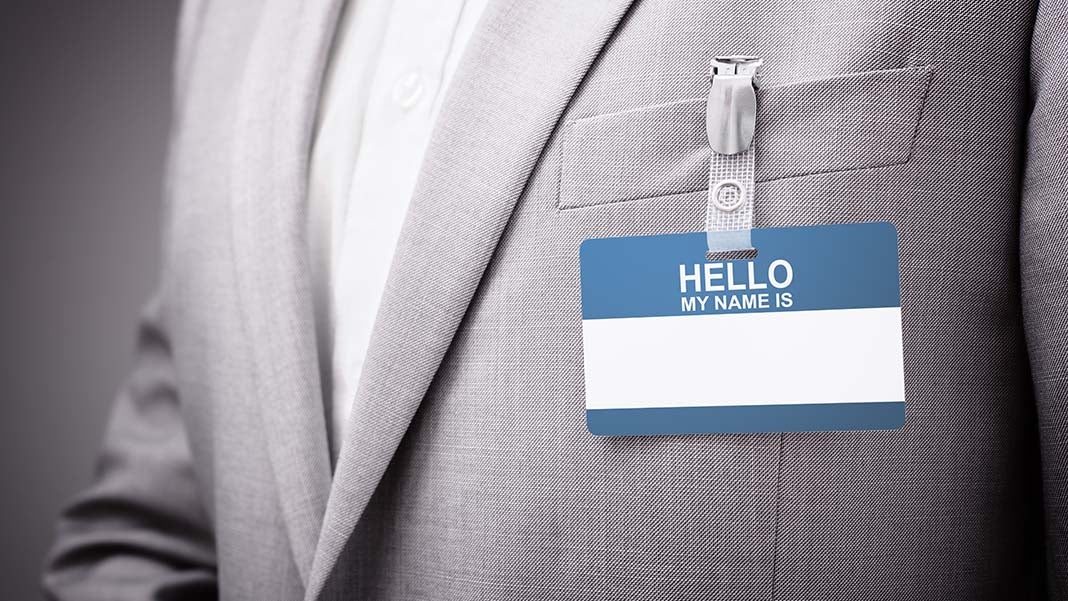How to Create a Brand Name That Sticks
By: Elaine Fogel

Have you ever wondered how companies develop their brand names? How did marketers come up with Twitter, Hulu, or Uber?
According to MSG Management Study Guide, A brand name “is one of the brand elements which helps the customers to identify and differentiate one product from another. It should be chosen very carefully as it captures the key theme of a product in an efficient and economical manner.”
In the second edition of her book, Hello, My Name Is Awesome,* ace-naming consultant and author, Alexandra Watkins, explains how anyone—even noncreative types—can create memorable and effective brand names.
“No other investment you’ll make in your business will last longer or get used more than your name. Getting it wrong can have painful consequences,” she cautions.
Here are Watkins’ responses to common brand naming questions:
Q: Should naming a company be left to the branding experts or is this a discipline that anyone can learn?
A: Naming is an expertise, just like many other skills. While naming firms have a lot of experience, anyone can learn how to create awesome names—they just need a framework for doing so and lots and lots of practice.
Unfortunately, most brand names are contrived in a white room with a white board by people who don’t know how to create a good name, or worse, don’t even know what makes a good name in the first place. But now they have access to a set of professional best practices with my SMILE & SCRATCH name evaluation test, which is the focus of my book.
Q: The acronym, SMILE, describes the five qualities of a super sticky name. What are they?
A:
Suggestive – evokes something about your brand.
Memorable – makes an association with the familiar.
Imagery – aids memory through evocative visuals.
Legs – lends itself to a theme for extended mileage.
Emotional – moves people. If your name captures all five of these qualities, you’re ahead of the curve.
Q: What are some of the ways that you can make a name memorable?
A: Memorability is all about making connections with things that people are already familiar with. Take LeapFrog, for instance. It’s a game that we all remember from childhood, so it’s easy to make the transition to a company that sells educational toys that help children leap ahead.
LeapFrog is a name you won’t forget because it’s already been lasered into your brain. These associations don’t have to be so direct, though—consider Pentium, a line of microprocessors from Intel. Pentium is a made-up word, but it sounds like an element from the periodic table. It sticks in your brain because of all those years of chemistry you took in school.
Q: We live in a culture now dominated by images. How helpful is it to have an Image associated with a company or product name?
A: Imagery is tremendously important. People are visual, hence the famous saying “a picture is worth a thousand words.”
Well, with naming what we’re trying to do is evoke a whole picture with just one or two. People instinctively understand and appreciate names with strong imagery. Timberland, for instance, evokes rugged landscapes, exploring, and clean forest air.
Some other good examples are BlackRock, a large financial entity, which feels solid and trustworthy. Another is Leaf, an electric car, which feels environmentally friendly.
Q: The acronym, SCRATCH, describes the seven deadly sins in naming a company or product. Please describe them.
A:
Spelling challenged – looks like a typo.
Copycat – resembles competitors’ names.
Restrictive – limits future growth.
Annoying – seems forced, frustrates customers.
Tame – feels flat, descriptive, uninspired.
Curse of knowledge – speaks only to insiders.
Hard to pronounce – confuses and distances customers. An easy way to think about it is, if it makes people scratch their heads, you should scratch it off the list.
Q: Sometimes we’re tempted to give our startups or new products a very hip name that has meaning only to insiders. What are other temptations due to the “Curse of knowledge” that can lead to a troublesome name?
A: A particularly heinous offender is Xobni—inbox spelled backwards, but I don’t think any of their customers ever figured that one out without being told. Seemingly clever names like that usually just confuse people and hurt your business.
A common offence is using a name that means something in a foreign language. Mzinga is a software that gets its name from the Zulu word for “ring” and the Swahili word for “beehive.” The restaurant SPQR translates to “the Senate and the Roman People” in Latin. Really?
Alexandra’s Picks for Best and Worst Names
5 Awesome Company Names
- Pinterest – clever mashup, easy to understand, spell and pronounce
- 23andMe – fun nod to DNA, personal connection
- Tesla – nod to inventor Nicola Tesla, works for every business they are in
- Amazon – strong metaphor, everything they do fits under it
- DoorDash – descriptive yet fun, nice alliteration
5 Bad Company Names
- Flickr – I’d like to buy a vowel please
- Trivago – forced mashup (trip + vacation + go)
- Docusign – outgrew name
- Postmates – “post” implies mail as opposed to fast door-to-door delivery
- Casper – disconnect with mattress comfort and sleep
“We appreciate it when names surprise us, entertain us, and give us a happy little jolt of dopamine. Names that make us smile are infectious. They are the ones we talk about, tweet, and repeat,” writes Watkins.
What are the features of a good brand name?
According to MSG Management Study Guide, a good brand name should have following characteristics:
- It should be unique / distinctive (for instance, Kodak, Mustang)
- It should be extendable.
- It should be easy to pronounce, identified and memorized. (For instance, Tide)
- It should give an idea about product’s qualities and benefits (For instance, Swift, Quickfix, Lipguard).
- It should be easily convertible into foreign languages.
- It should be capable of legal protection and registration.
- It should suggest product/service category (For instance, Newsweek).
- It should indicate concrete qualities (For instance, Firebird).
- It should not portray bad/wrong meanings in other categories. (For instance, NOVA is a poor name for a car to be sold in Spanish country, because in Spanish it means “doesn’t go”)
Hello, My Name Is Awesome: How to Create Brand Names That Stick* is available for pre-order now.














